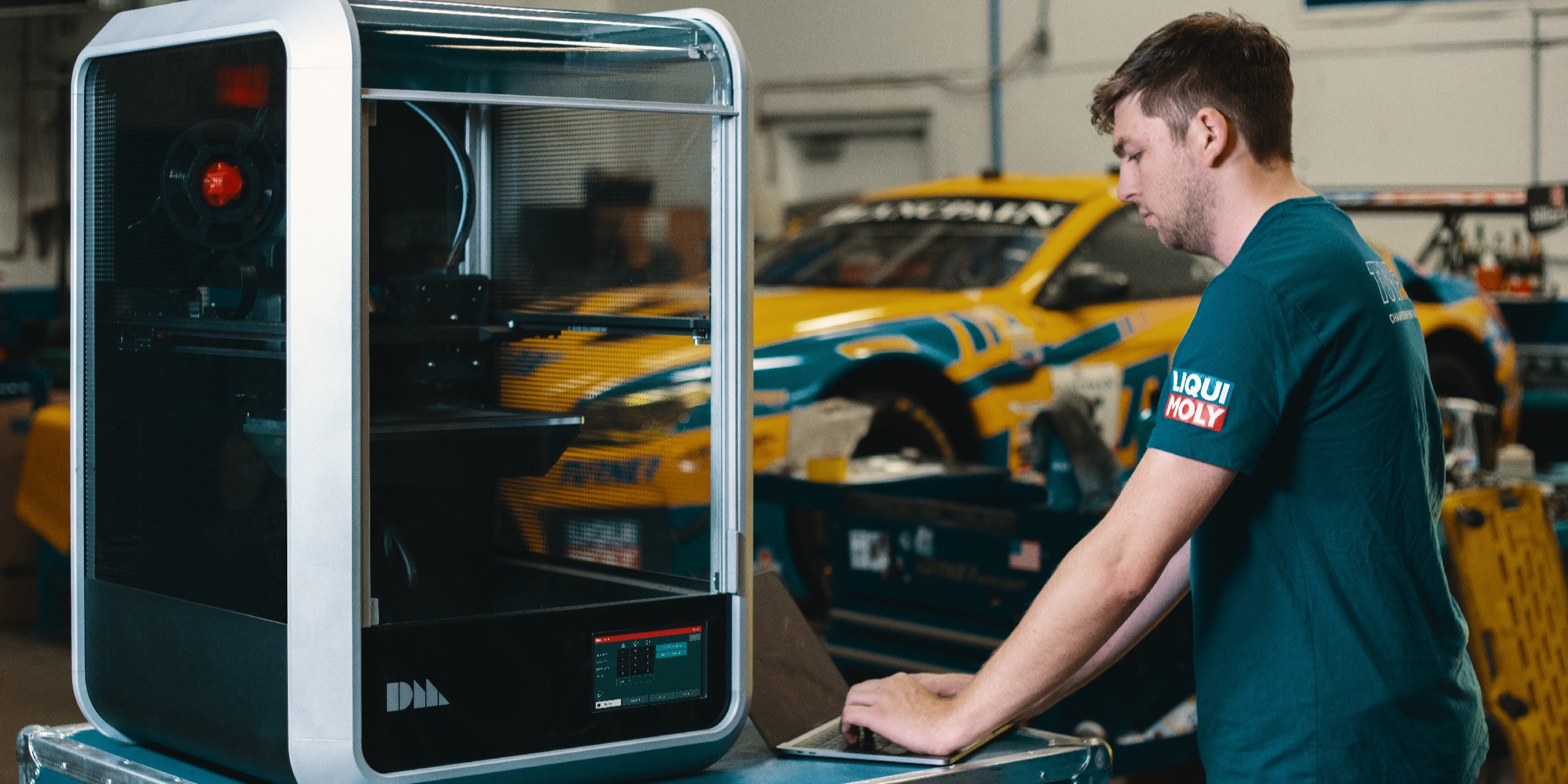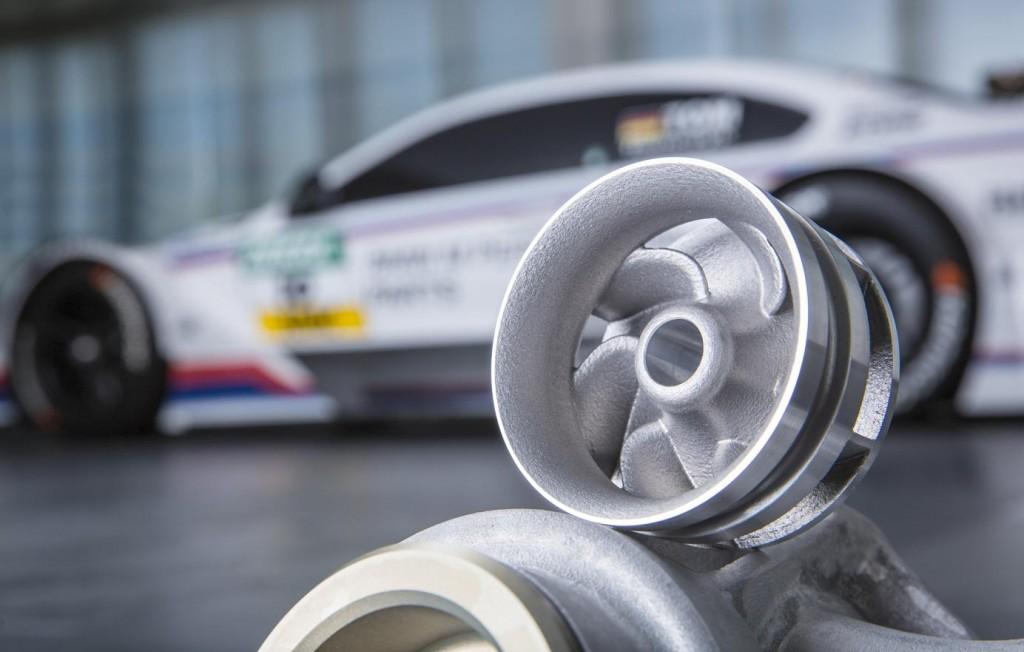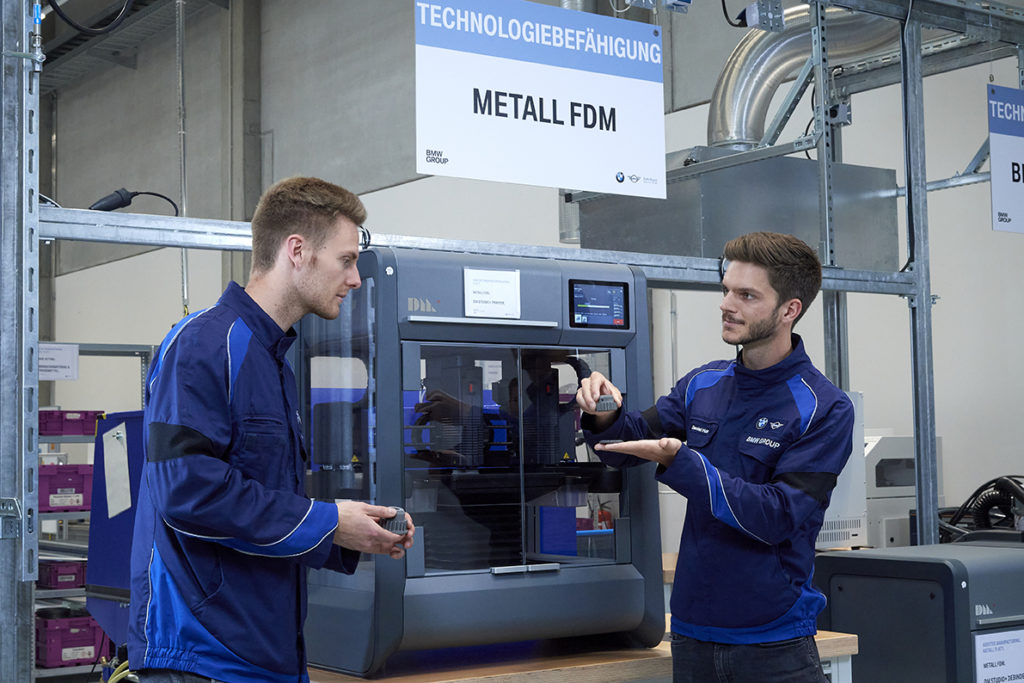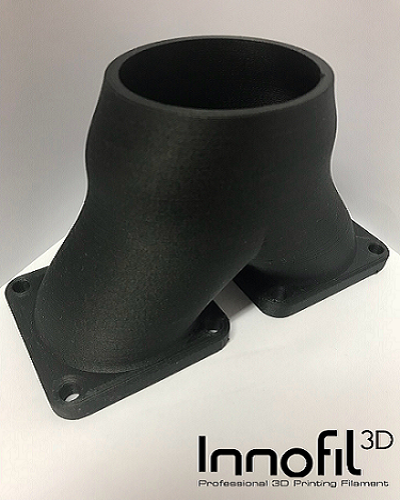3D Printing Unicorn Desktop Metal to Go Public After Reverse Merger Deal
After becoming one of the fastest-growing 3D printing startups, Desktop Metal announced plans to go public following a reverse merger deal with blank check company Trine Acquisitions. The Boston-based metal 3D printing systems manufacturer revealed that the combined companies will be listed on the New York Stock Exchange (NYSE) under the ticker symbol “DM” and are expected to have an estimated post-transaction equity value of up to $2.5 billion.
2020 has seen a surge of company’s opting to go public through special purpose acquisition company (SPAC) merger deals. During the first half of the year, there have been 79 SPAC IPOs that have raised gross proceeds of $32 billion, according to SPACInsider, a sharp increase from last year’s 59 SPAC IPO’s and gross proceeds of $13.6 billion. In fact, Desktop Metal follows in the steps of space tourism startup Virgin Galactic and electric car maker Nikola Corp, drawn to SPAC listings to go public without the risk and complexity of a traditional IPO.
Since coming out of stealth mode in 2017, Desktop Metal has managed to raise over $438 million in funding, becoming one of the fastest companies in US history to achieve unicorn status. Claiming to reinvent the way design and manufacturing teams 3D print metal and continuous carbon fiber parts, the company aims to create the world’s fastest metal 3D printers. Its broad product portfolio already includes an office-friendly metal 3D printing system for low volume production, as well as new mid-volume manufacturing and continuous fiber composite printers, both of which are expected to ship in the fourth quarter of 2020.
With a valuation of $1.5 billion, Desktop Metal is the first major Massachusetts-based 3D printing company to go public. Locally, Desktop Metal competitors include fellow 3D printing technology unicorn Formlabs in Somerville and continuous carbon fiber manufacturing company Markforged in Watertown.
“We are at a major inflection point in the adoption of additive manufacturing, and Desktop Metal is leading the way in this transformation,” said Ric Fulop, Co-founder, Chairman, and CEO of Desktop Metal. “Our solutions are designed for both massive throughput and ease of use, enabling organizations of all sizes to make parts faster, more cost effectively, and with higher levels of complexity and sustainability than ever before. We are energized to make our debut as a publicly traded company and begin our partnership with Trine, which will provide the resources to accelerate our go-to-market efforts and enhance our relentless efforts in R&D.”
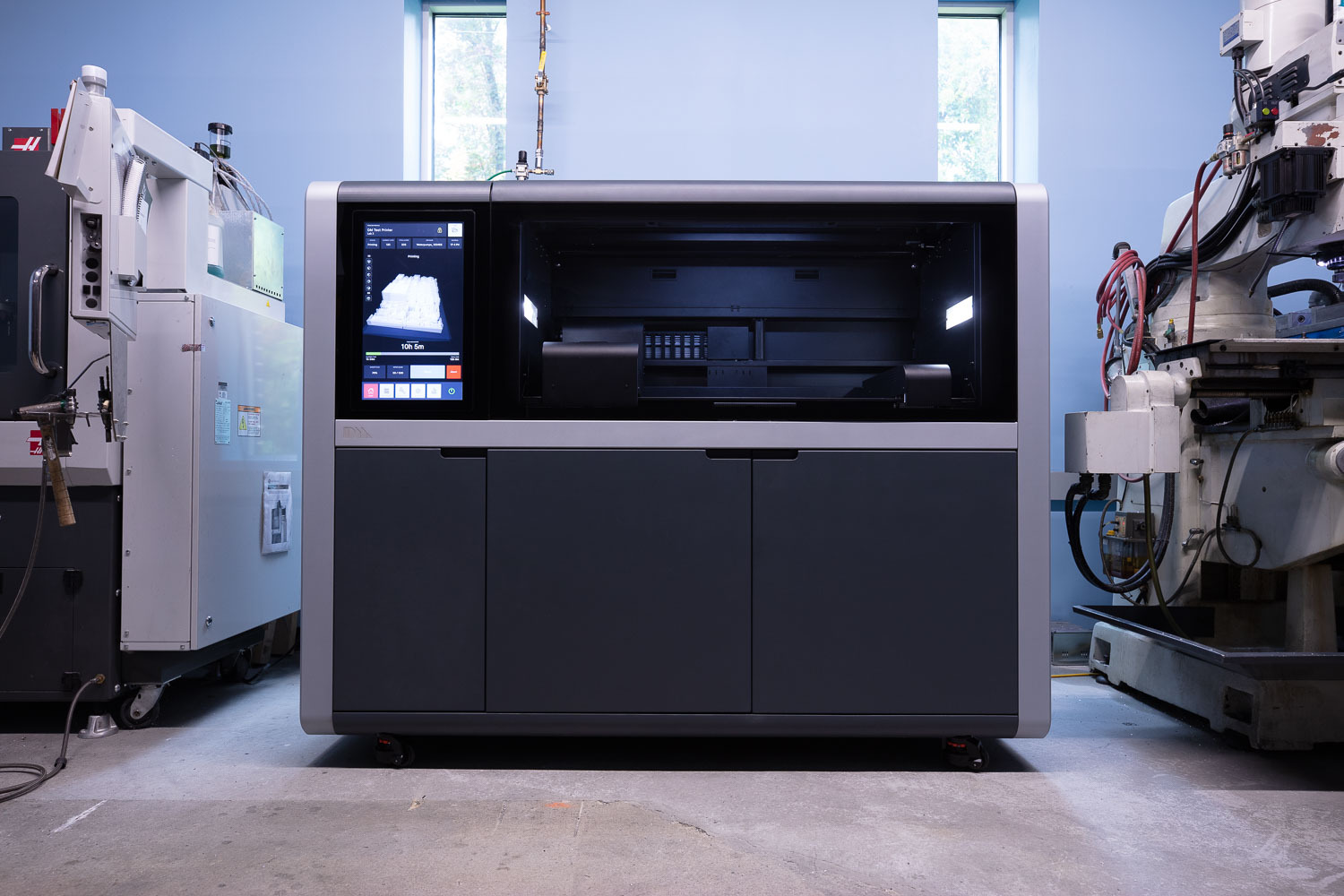
Desktop Metal’s Shop System, an additive manufacturing solution targeted at the machine shop market and designed for mid-volume production of customer-ready metal parts. (Image courtesy of Business Wire)
According to Desktop Metal, the deal will generate up to $575 million in gross proceeds, comprised of Trine’s $300 million of cash held in trust, and $275 million from fully committed common stock PIPE (private investment in public equity) at $10.00 per share. The move is expected to provide, what the company considers, an opportunity to build the “first $10 billion additive 2.0 company,” part of an emerging wave of next-generation additive manufacturing (AM) technologies expected to unlock throughput, repeatability and competitive part costs. With solutions featuring key innovations across printers, materials, and software, Desktop Metal anticipates this new trend to pull AM into direct competition with conventional processes used to manufacture $12 trillion in goods every year.
When consulted, 3DPrint.com’s own Executive Editor and Vice President of Consulting at SmarTech Analysis, Joris Peels, considered the deal to be an aggressive valuation when outlined against the current capabilities, technologies, growth and installed base of the firm. Peels explained that at present, he does not think that the transaction is commensurate with revenues or the perceived quality of its offering.
The expert further suggested that “the firm has consistently overstated capabilities. It has also had significant issues with deploying its technology in the field. Competition from firms such as Markforged, HP, and GE will expand the binder jet market considerably, but also offer alternatives to Desktop Metal. New startups such as One Click Metal, Laser Melting Innovations, Aconity3D and ValCUN can also provide alternative solutions. The low-cost metal market is set for rapid growth. These are the types of systems that we could expect in many a machine shop and factory in the years to come. The opportunity is for over 750,000 deployments worldwide, dwarfing the current market. The battle for dominance in this exciting space will yet see more market entrants arrive and we are in the initial stages of a very exciting time.”
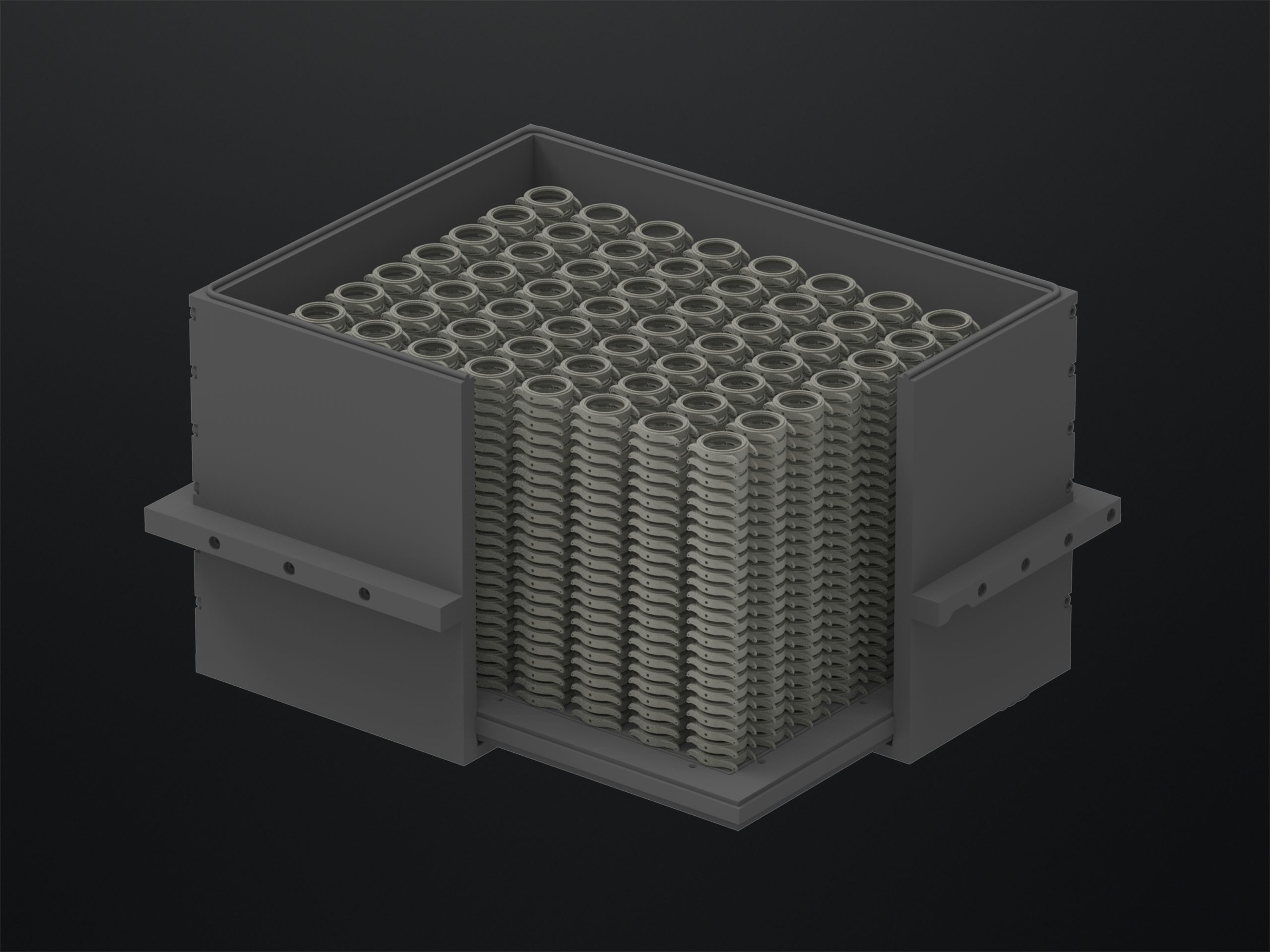
Desktop Metal’s Production System is designed to be the fastest way to 3D print metal parts at scale. (Image courtesy of Business Wire)
During a conference call on August 26, 2020 – just after news of Desktop Metal’s SPAC transaction were revealed – legendary technology investor and operator Leo Hindery, Jr., Chairman and CEO of Trine Acquisitions, said that Desktop Metal will be the “only pure-play opportunity available to public market investors in the additive manufacturing 2.0 space.”
Emphasizing his belief that the company is in the process of revolutionizing the industry, and developing a technology that will be a significant step in replacing mass manufacturing base, which has become antiquated, Hindery said this deal will become pivotal to transforming the products and industries that will drive the economy into the 21st century, including electric vehicles, 5G communications, digital supply chains, and space flight.
Both company CEOs suggested that the AM industry is slated to realize explosive growth over the next decade, reaching over ten times the 2019 market size, estimated to surge from $12 billion to $146 billion by 2030 as it shifts from prototyping to mass production.
To better understand the future of the AM metal industry, 3DPrint.com turned to Scott Dunham, SmarTech’s Vice President of Research, who reported on the market conditions today, stating that nothing changes in business without significant pain first.
“The metal additive manufacturing market in 2020 is feeling a combination of ongoing growing pains with difficulties in the sales environment now intensified due to economic effects from COVID-19. General manufacturing companies facing similar challenges, however, and now are faced with the choice of continuing on with the status quo in light of the pandemic exposing weaknesses in their supply chains, or making serious changes to address those weaknesses in the future. Both choices are fraught with risks,” Dunham suggests. “Metal additive manufacturing market stakeholders are hopeful this scenario may catalyze the industry back to strong growth as companies arrive at a decision to invest in new technologies and further develop their capabilities in concert with AM leaders to arrive better prepared for future challenges.”
Despite the current impasse, Dunham insists that the additive industry will ultimately benefit from a renewed push for cost savings, supply chain independence and agility, and a desire for faster manufacturing. Suggesting that not all will make it through the next two years in metal AM, but those which do will likely build the future of manufacturing that experts have anticipated for some time.
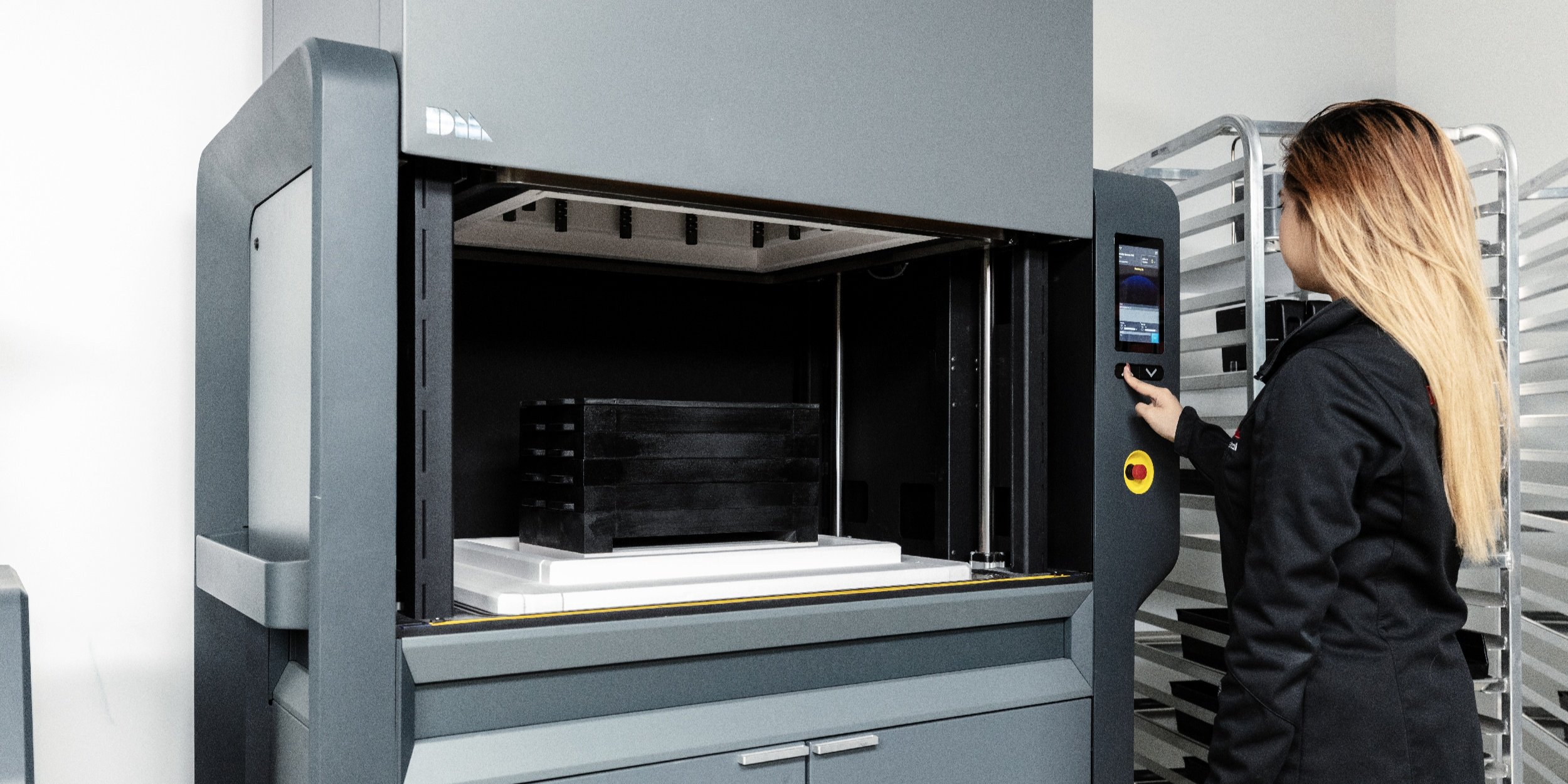
Desktop Metal’s innovative 3D printing metal systems used from prototyping through mass production. (Image courtesy of Desktop Metal)
In a quest to speed up technology development Desktop Metal is moving fast. The proposed business combination is expected to be completed by November 2020 and has already been approved by the boards of directors of the two companies. Once finalized, Desktop Metal will have post-deal cash on hand that will enable accelerated growth and product development efforts, especially as a large portion of the $575 million in gross proceeds from the deal will be dedicated to continuous product innovation and to pursue targeted acquisition opportunities.
The post 3D Printing Unicorn Desktop Metal to Go Public After Reverse Merger Deal appeared first on 3DPrint.com | The Voice of 3D Printing / Additive Manufacturing.
Desktop Metal to go public as a $2.5 billion 3D printing business, raising estimated $575 million in funding
BMW opens new €15 million additive manufacturing campus in Munich to “industrialize 3D printing”
BMW Opens €15 Million Additive Manufacturing Campus
BMW Group has opened its new Additive Manufacturing Campus, which combines 3D printing for research, prototyping and series parts production in a single facility. The €15 million investment is meant to further the vehicle giant’s position in the use of additive manufacturing (AM) for the automotive industry.
At the ribbon-cutting ceremony, Milan Nedeljković, BMW AG Board Member for Production, said, “Additive manufacturing is already an integral part of our worldwide production system today, and established in our digitalisation strategy. In the future, new technologies of this kind will shorten production times even further and allow us to benefit even more fully from the potential of toolless manufacturing.”
In 2019, BMW Group 3D printed roughly 300,000 parts. The Additive Manufacturing Campus employs 80 workers running about 50 industrial AM systems, including metals and plastics. Beyond the center, BMW runs 50 other 3D printers globally.
Within the site, there is a “pre-development” team that is dedicated to improving new technologies and materials for use throughout BMW, with a focus on automating process chains. By reducing manual labor, the unit aims to reduce the cost of 3D printing and make it better suited for industrial scale.
An example of the BMW Group’s work in this area is the Industrialisation and Digitisation of Additive Manufacturing for Automotive Series Production (IDAM) project, funded in part by the German Ministry of Education and Research. With the IDAM project, a production line, from production preparation to manufacturing and reworking of parts, is being established at the Additive Manufacturing Campus. The IDAM team will use the production line to create 50,000 series parts annually with 3D printing, including more than 10,000 individual and spare components.
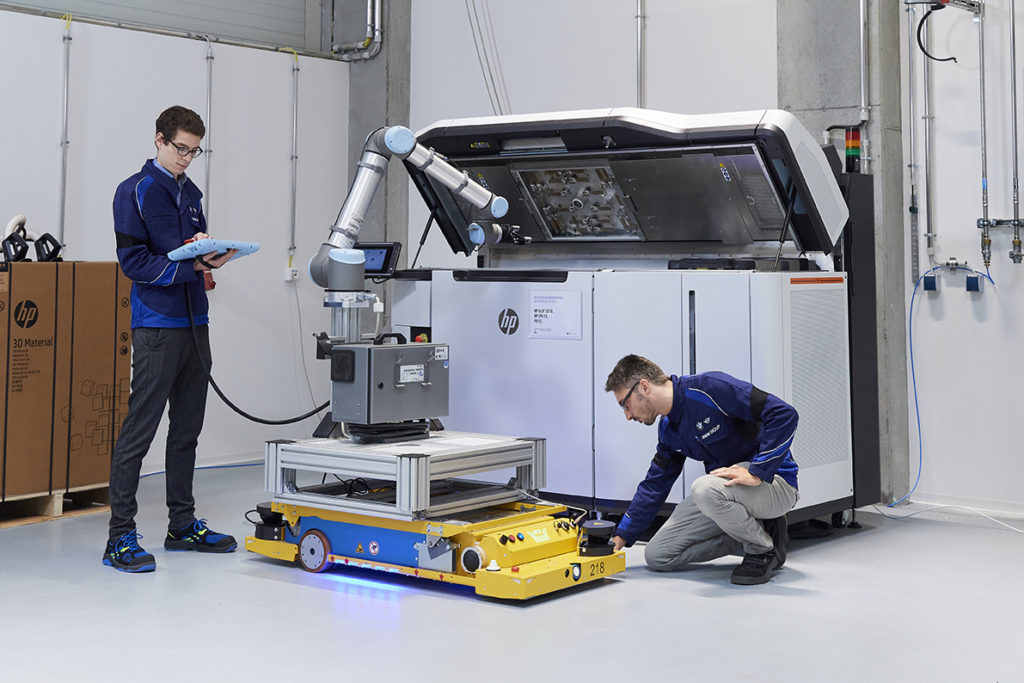
Demonstrating automation work at BMW, this image shows the use of a robotic arm with an HP Multi Jet Fusion system.
Also at the campus, BMW will be performing its work in the POLYLINE project, in which process steps for the series production of plastic parts are connected digitally and a quality assurance strategy is developed to ensure consistent quality throughout the process chain. The 15 members of the POLYLINE consortium will use the facility to create and test what they consider a “future-proof” automated production line for 3D printing plastic parts that is digitally linked. So far, the project members suggest that, through this work, manufacturing costs can be cut by 50 percent, while improving the stability of 3D printing and sustainability of production overall.

The Campus will also provide consulting and training courses for workers throughout the BMW Group as a means of successfully rolling out the various AM technologies and methodologies.
BMW has been involved in 3D printing for nearly 30 years, first prototyping parts for concept cars in 1991 before using AM for small series production in 2010. Namely, metal powder bed fusion was used to 3D print water pump wheels for DTM race cars. Since then, the company has 3D printed parts for the Rolls-Royce Phantom, BMW i8 Roadster and MINI John Cooper Works GP, a vehicle that features four 3D-printed components standard.
In addition to part production, the corporation has been investing in new AM technologies via its venture capital arm, BMW i Ventures. In 2016, the division funded Carbon’s Digital Light Synthesis for continuous digital light processing. The next year, it contributed to Desktop Metal, which has since released metal binder jetting, bound metal deposition and carbon fiber 3D printing systems.
Other investments have gone to digital manufacturing platform Xometry and German startup ELISE, dedicated to automating product design. The company can purportedly save up to 90 percent in design time by producing part “DNA” that encompasses such information as technical and load requirements, as well as manufacturing restrictions, optimization parameters and costs. The DNA can be used to then automatically create optimized parts.
All of this is directed toward BMW’s larger goals for AM and automation, which Daniel Schäfer, Senior Vice President for Production Integration and Pilot Plant at the BMW Group, spoke to: “Our goal is to industrialise 3D printing methods more and more for automotive production, and to implement new automation concepts in the process chain. This will allow us to streamline component manufacturing for series production and speed up development. At the same time, we are collaborating with vehicle development, component production, purchasing and the supplier network, as well as various other areas of the company to systematically integrate the technology and utilise it effectively.”
As described here, BMW has demonstrated expert use of the technology, just as one would expect. When it comes to series production, so far 3D printing has been limited to luxury and sports vehicles. Given its experience and expertise, however, it seems relatively safe to assume that it will be among those pushing series production of AM to more mainstream product lines. By reducing costs through the projects described above and by adopting newer technologies designed for large batch production, we may ultimately see 3D-printed end parts make it into products that the average consumer might interact with.
[Images/Source: BMW Group.]
The post BMW Opens €15 Million Additive Manufacturing Campus appeared first on 3DPrint.com | The Voice of 3D Printing / Additive Manufacturing.
Syndaver launches its first 3D printer, the SynDaver Axi
3D Hubs 3D Printing Trends Report forecasts 24% growth in 3D printing industry over 5 years
80 additive manufacturing experts predict the 3D printing trends to watch in 2020
3D Printing Industry Review of the Year July 2019
State of the Art: Carbon Fiber 3D Printing, Part Two
In the first part of our series on carbon fiber 3D printing, we really only just got started by providing a background on the material, some of its properties, and how it’s made. Now that that’s out of the way, we can get to the fun stuff: how carbon fiber is currently available in the 3D printing industry.
Carbon Fiber Filaments
The most widely accessible form of carbon fiber in 3D printing is chopped carbon fiber filament. There are a wide variety of chopped carbon fiber blends available, with 3DXTECH offering some of the most diverse types that include high temperature thermoplastics as the matrix material. For instance, it’s possible to buy, PA, PEKK, PEEK, and PEI (ULTEM) filaments filled with chopped carbon fiber.
In chopped carbon fiber filament, segments of carbon fiber are mixed with thermoplastic pellets and then extruded into filament suited for extrusion 3D printing. Because the carbon fiber is broken, and not in continuous strands, it only offers the stiffness of carbon fiber at the points where those very small fragments are located.
Nevertheless, the introduction of carbon fiber into thermoplastic filament can improve its strength and stiffness but may also have negative effects, as well. One team of researchers found that, in addition to the desired strength, a PEEK-carbon fiber composite had more porosity and poor adhesion between printed layers. Another group found similar results with chopped carbon fiber in resin for stereolithography, including increased brittleness.
This doesn’t mean that chopped carbon fiber filament (or resin) doesn’t have value in 3D printing, particularly since it is much cheaper than the technologies that we will be going on to discuss. However, we will see in part three of this series how even these materials can be improved with some pretty ingenious thinking.
Continuous Carbon Fiber 3D Printing
In 2014, Markforged introduced continuous filament fabrication (CFF) to the world. In CFF, carbon fiber is pre-impregnated with a thermoplastic nylon, which is deposited from a specialty extruder. This is then used to provide reinforcement for plastic parts, including the firm’s own brand of chopped carbon fiber filament, Onyx.
More recently, a Russian company called Anisoprint has commercialized its own version of continuous carbon fiber printing dubbed composite fiber coextrusion (CFC). Unlike CFF, which features one input and one output for its prepreg material, CFC uses two inputs and one output. One input is dedicated to reinforcement fiber and the other is used for feeding thermoplastic. Dry fiber is fed into the system, where it is impregnated with an extremely liquid thermoset resin. During printing, the thermoset is cured and extruded together with traditional thermoplastic filament. The thermoset matrix permeating the reinforcement fiber then bonds with the filament.
As a result, not only is there less of a chance of introducing air bubbles or voids in the prepreg material, but it also opens up the variety of thermoplastics that CFC can use (so far, PETG, ABS, PC, PLA and PA).
The rate of deposition can also be controlled in CFC to generate interesting structures and properties not achievable with traditional composite manufacturing, such as lattice shapes. In crossing one strand of carbon tow over another, in traditional circumstances, the thickness of that area is doubled. With CFC, it’s possible to reduce the thermoplastic being extruded, while still depositing the carbon fiber, reducing the amount of plastic in that area.
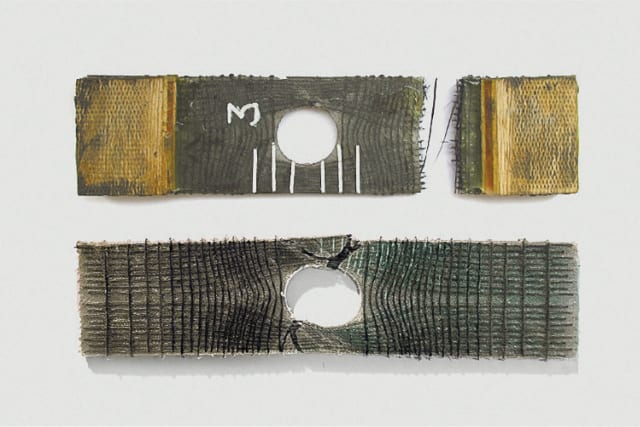
Strength is evenly distributed around the hole, but not in the entire structure in part one, causing it to sheer. In part two, the entire part is reinforced in a crisscross fashion.
This, in turn, increases what is known as the “fiber volume ratio”, the amount of fiber reinforcement there is in relation to the total volume of the composite. A higher fiber volume ratio usually means improved mechanical properties. So, as these carbon fibers are crisscrossed in a 3D-printed lattice structure, the fiber volume ratio increases, as does the strength.
In aerospace, engineers seek fiber volume ratios of up to 60 percent or so. However, with other carbon fiber 3D printing technologies, the ratio is closer to 30 to 40 percent. Without lattice structures, CFC can achieve about 45 percent, but, at points where carbon fibers overlap, this ratio is doubled—that is, even stronger than available with traditional composites.
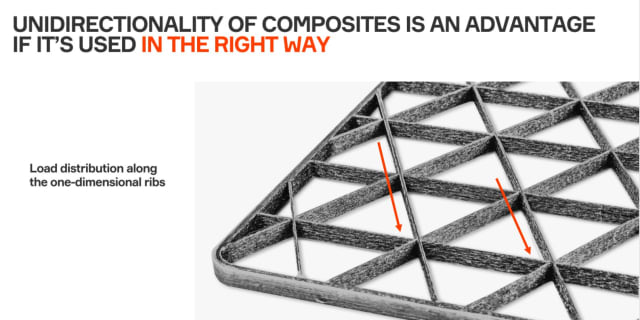
With minimal thermoplastic deposition in one direction, this part has less material but improved strength.
In woven carbon fiber, multiple layers of unidirectional fibers crisscross to mimic isotropy, which ends up providing omnidirectional strength at the expense of excess material. However, with CFC, it is possible to only add material and strength where necessary. For this reason, Anisoprint highlights the anisotropy of carbon fiber as a benefit, rather than a weakness—hence the name “Anisoprint.”
Since Markforged and Anisoprint have come to market, a third challenger has appeared with its own form of continuous carbon fiber printing. Ahead of Formnext 2019, Desktop Metal introduced a technology called micro automated fiber replacement (μAFP). μAFP relies on two print heads: one deposits thermoplastic filament and then a tool changer swaps to the other, which lays down prepreg tape, similar to the automated fiber placement technology mentioned briefly in part one.
The carbon fiber-thermoplastic tape is first heated to above the melt temperature of the plastic. Then, a roller presses the tape onto the printed part. The combination of heat, pressure and then the cooling of the printed part, allows the tape the part to fuse.
Desktop Metal is releasing the technology with the Fiber HT and Fiber LT 3D printers. The LT is available as with a $3,495 annual subscription and prints PA6-carbon fiber or PA6-fiberglass tape. The HT ($5,495 per year), can not only print with those tapes, but also PEEK or PEKK combined with carbon fiber or fiberglass. The HT also has two printheads, while the LT has just one.
Additionally, the Fiber HT includes the ability to manage the orientation of the fibers using advanced settings in its software, can achieve less than one percent porosity, and can print with a fiber volume ratio of up to 60 percent.
Large Format and Experimental Carbon Fiber 3D Printing
Also at Formnext, Anisoprint unveiled its production scale CFC system, the Anisoprint ProM IS 500. With a build volume of 600 mm x 420 mm x 300 mm, the system has a heated build chamber capable of printing PEEK and PEI, as well as automated calibration and other production-quality features. With four swappable printheads, it will also be able to combine different composite materials, in addition to carbon fiber. The system will also feature software for optimizing the printing of lattice structures. Anisoprint aims to ship its first ProM IS 500 systems at the end of 2020.
While this is the Russian company’s first production-level carbon fiber 3D printer, it may face some stiff competition. There are a number of other firms that are working on their own unique takes on carbon fiber 3D printing. Because they differ distinctly from the types discussed here, we will explore them in the next chapter of our saga.
The post State of the Art: Carbon Fiber 3D Printing, Part Two appeared first on 3DPrint.com | The Voice of 3D Printing / Additive Manufacturing.

